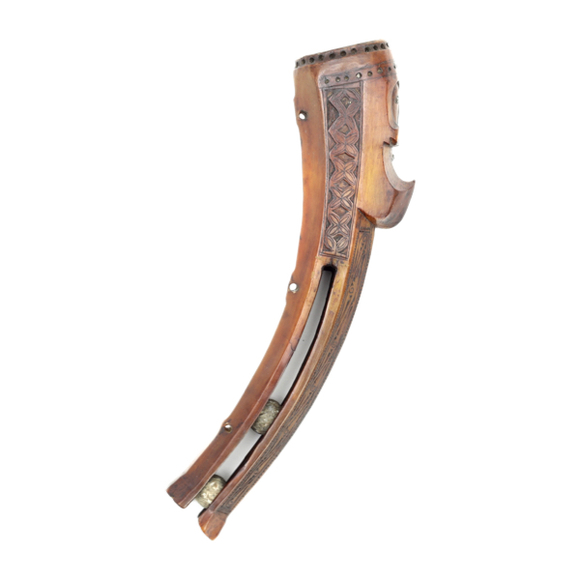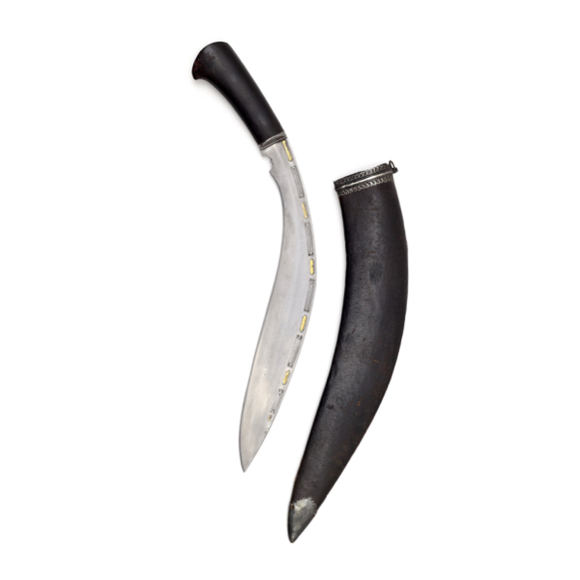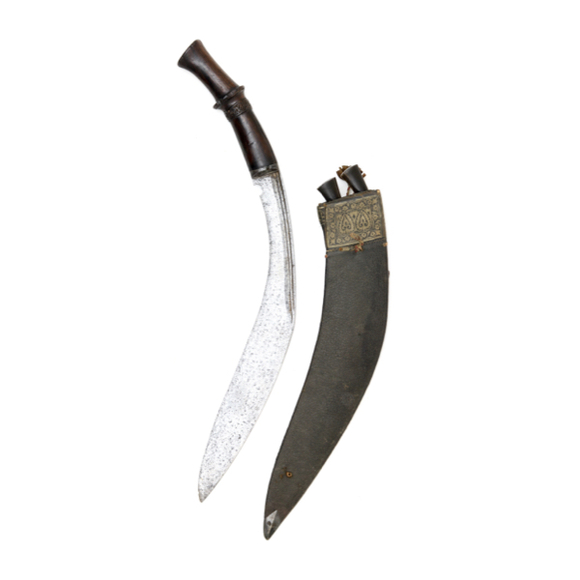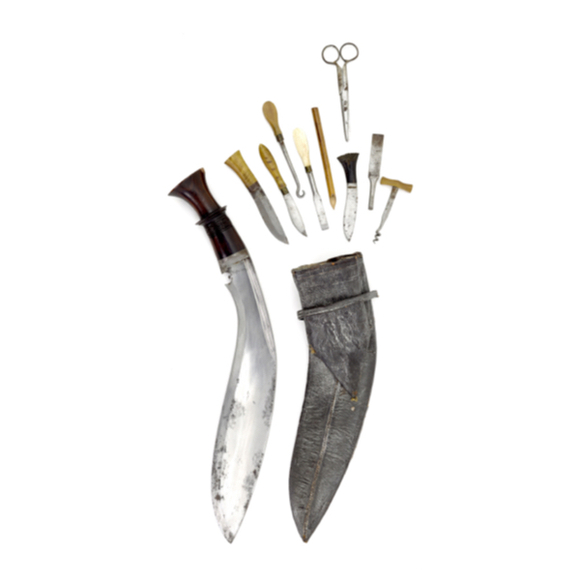Language: Karo Batak
Source: Joustra; Karo-Bataksch woordenboek, 1907
Introduction
The Batak kalasan is characterized by having a blade with a straight or slightly concave back and a slightly S-shaped edge, with a small protrusion on the edge side near the forte.1
They come with a variety of different hilts and scabbard configurations.

A typical Batak kalasan sword.
Mandarin Mansion inventory 2021.
Varieties
Those clad in silver can also be called piso rempu pirak, literally "knife with silver strips". The variety with a peculiar hilt with two parallel protrusions, like a stylized open beak, which is called sukul nganga.2
Notes
1. The name kalasan appears in M. Joustra; Karo-Bataksch woordenboek. Leiden, Brill, 1907.
2. See Albert van Zonneveld; Traditional weapons of the Indonesian archipelago. C. Zwartenkot Art Books, Leiden. Page 59. Also see H.W. Fischer; Catalogus van 's Rijks Ethnographisch Museum, Deel VIII. Bataklanden. Met aanhangsel Maleische Landen ter Sumatra's Noordoostkust. [Sumatra II]. Leiden, E.J. Brill, 1914. Page 101.






